by Gabriel Scott, In-House Counsel
Is old growth clearcutting on public lands making a comeback on the North Umpqua River?
Thus seems to say the BLM in its latest timber sale announcement, called “Umpqua Sweets.” While BLM’s official announcement is itself so vague and legalistic as to melt into nothing, recent groundtruthing of their proposed logging units reveals this sale to be a major disaster.
It would commercially log some two-thousand acres, including hundreds of acres of some of the most beautiful and prized forests left. There are dozens of aspects to this story; dozens of features and perspectives. The BLM proposes logging right along the North Umpqua river, has many units of old-growth, and has been heedless of exceptional wildland treasures. The project has some hopeful aspects, proposing fuel treatment for forest fires on specific routes and near homes, and riparian restoration of several kinds. Both of those are legitimate and important issues, and Cascadia has urged BLM to collaborate to expand and do even more of those actions. But in the context of the commercial timber sale units we’ve checked in the field, they appear frequently opportunistic.
Umpqua Sweets could be a poster-child for the regent binge of BLM timber sales under its new management plan. It puts timber values above everything else, using whatever rationales come handy to get out the cut, at massive waste of human and natural energy.
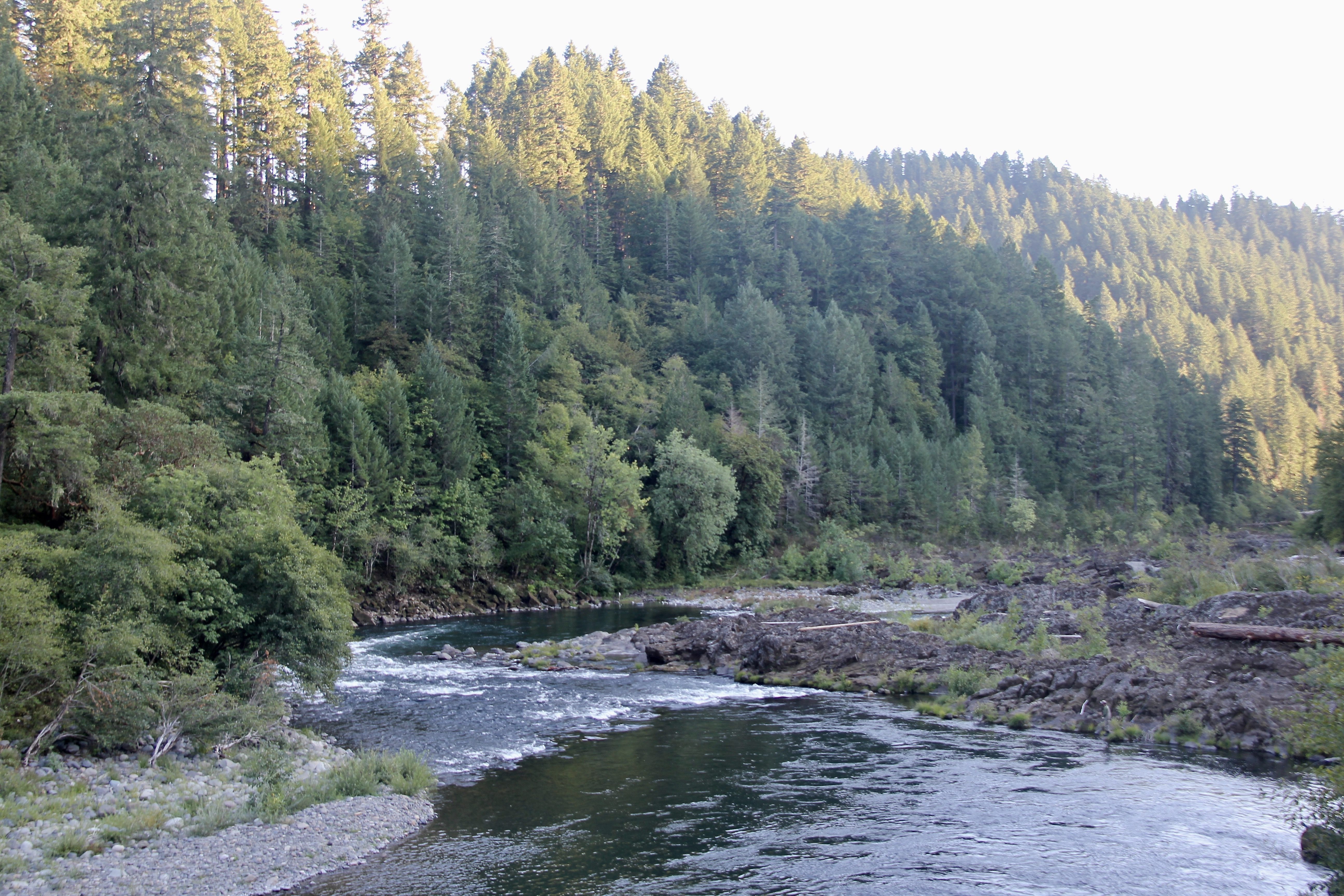
This is the first is a series of posts relaying remarkable aspects of the truth from the ground on this sad proposal. Do not despair, A C T. There is still time to convince the BLM to seriously look at a conservation alternative, but that is going to take a major groundswell of grassroots pressure. We’ve prepared a comment to BLM for you HERE that you can personalize. By all means pursue whatever means seem right to you.
Learning to Speak Bureaucratese
The official project announcement isn’t much to look at. In two pages of text and a map it shows the areas proposed for some kind of logging. It doesn’t point out any of the obvious conflicts with other values that we discovered on the ground.
As an attorney I admired the skilled craft behind the stilted legalize, because it very efficiently covers just about every possibility for commercial logging. It gives the required legal notice, without particularly alerting anyone to anything.
Forests are both young and old (from 41 to 160 years old), and in lands allocated for everything from timber harvest to old-growth reserve. The project “purpose” includes just about every conceivable rationale BLM has for logging: generating timber volume, adjusting age class, restoring streamside riparian areas, and managing fire. The map isn’t of the general area, as you’d expect if so many options really were on the table, but of specific proposed units, “fuels treatment” areas, and 12 miles of proposed new roads.
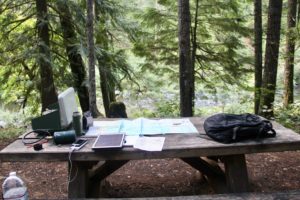
Paperwork can have a way of hiding the truth as much as reveal it, so we’ve headed down to work in the woods for a few days and see what things are like in the forest. I made a couple trips, and several locals and WildCAT fieldchecking volunteers have also followed up with on-the-ground information.
The land itself shows that with Umpqua Sweets, the BLM is making a play to bring back old-growth logging, functionally like clearcutting in most ways, and seemingly heedless of the environmental knowledge gained over the last several decades, and with a sort of institutionalized contempt towards the Wildlands values that you and I (and even most BLM and timber industry workers!) hold dear.
The BLM is all about clearcutting now; the rest be damned.
A World Class River
The first logging unit you see driving into the sale area from the west is unit 26-3-11A. This is a 120-year-old stand of healthy douglas fir growing up the slope on the south bank of the North Umpqua River.
On paper, according to BLM, it isn’t much to look at.
The river there is the North Umpqua. The bridge over the river, the haul route for this project, you might know as the Swiftwater pullout, boat ramp, and hugely popular (by Oregon standards) day use area.
On paper it may look boring and inocuouos, but on the ground
On the ground it looked…wait, are you kidding me? Am I unconsciously exaggerating? Is the map wrong? My pocket spy satellite says it should be right here.
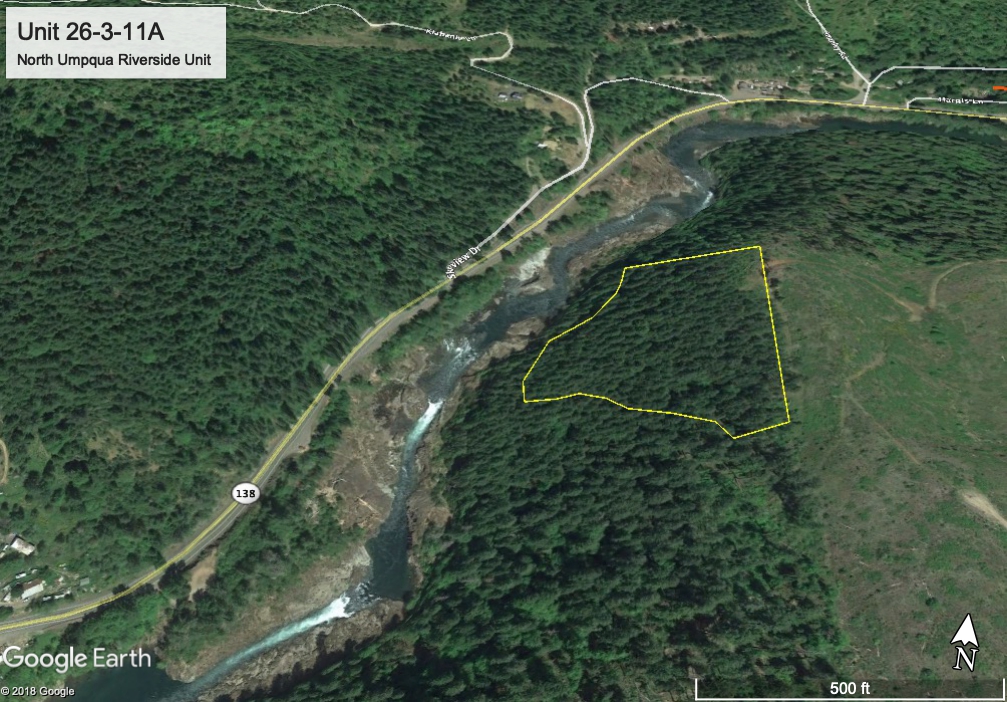
Wildlands don’t lie. It’s true, they are planning to log right alongside the North Umpqua River. The cutting would be visible from some of the epic swimming holes and fishing rocks along the river banks there.
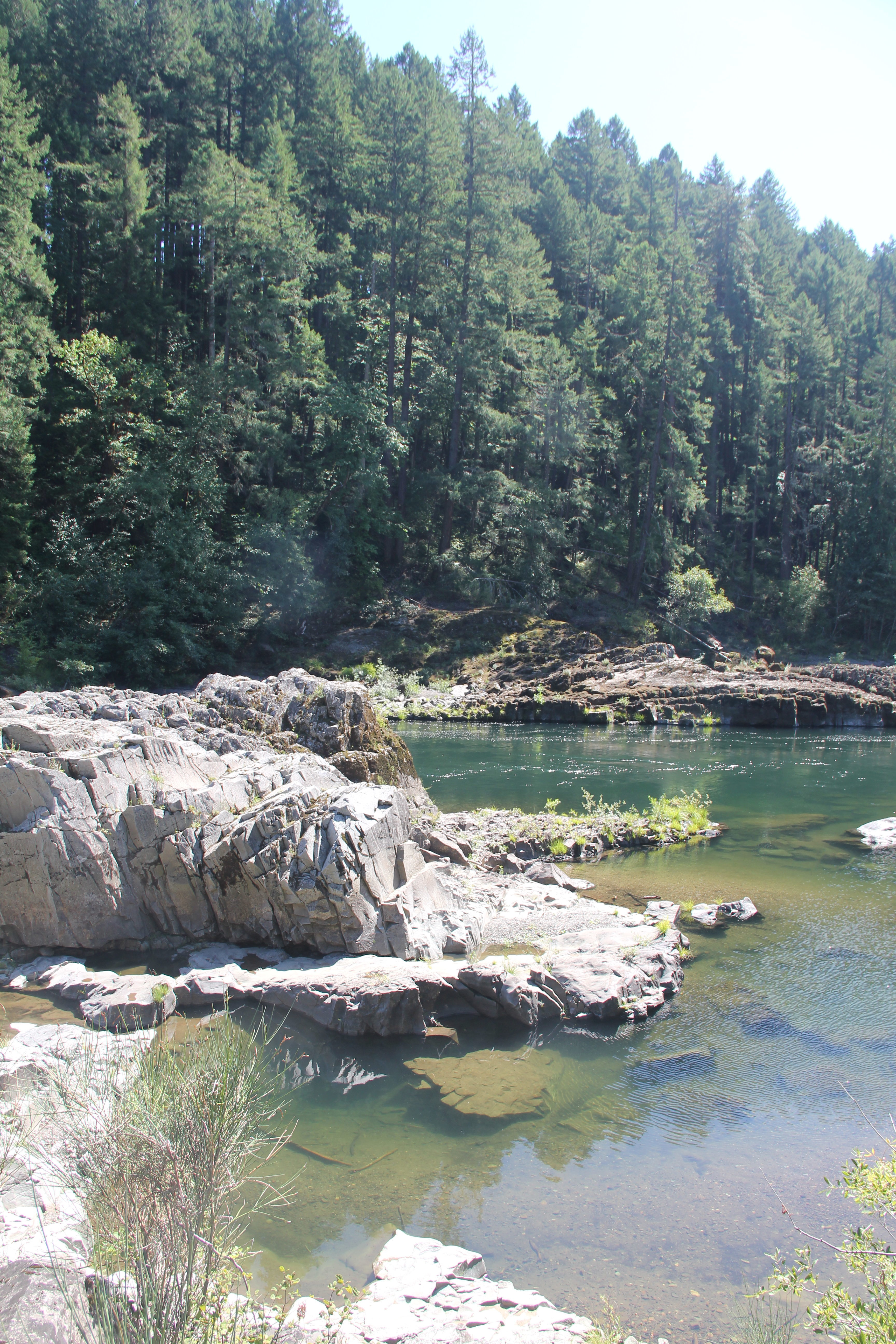
Generally world-class rivers like the North Umpqua have the highest possible protections. It is a wild & scenic river, a Class I watershed, widely recognized as critical for ESA-listed salmon and steelhead, etc etc..
As it turns out, for BLM, those protections don’t add up to much.
This particular unit is just downstream of the section that is Wild & Scenic (it ends at the Swiftwater) so that unique law doesn’t seem to help here. Under the new management plan this location has low visual protection. Picture it, BLM officially can do no wrong in terms of wrecking scenery.
Stream buffers are the big protection for rivers and streams. The North Umpqua, being a fish-bearing river, gets the maximum “no-cut” buffer it could in BLM’s world— which is one full site-potential tree height from the water’s edge. (The idea is they aren’t supposed to cut any tree that could fall into the water even when it grows up, if it grew up. They don’t plan to let them grow up.)
So that’s a little over a couple hundred feet of buffer from the river’s edge. Say they even went crazy and called it 300 feet, under the new BLM plan commercial logging is allowed even inside that buffer up to 120 feet. And creating snags or tipping trees over is allowed even inside that.
Whatever buffer, we will all see this logging from the highway and from the river. Heck, they see it from the scenic pullout just to the south. I stood at the top of this unit and from there you could see the road alongside the river, could hear the angry rush of the North Umpqua rapids.
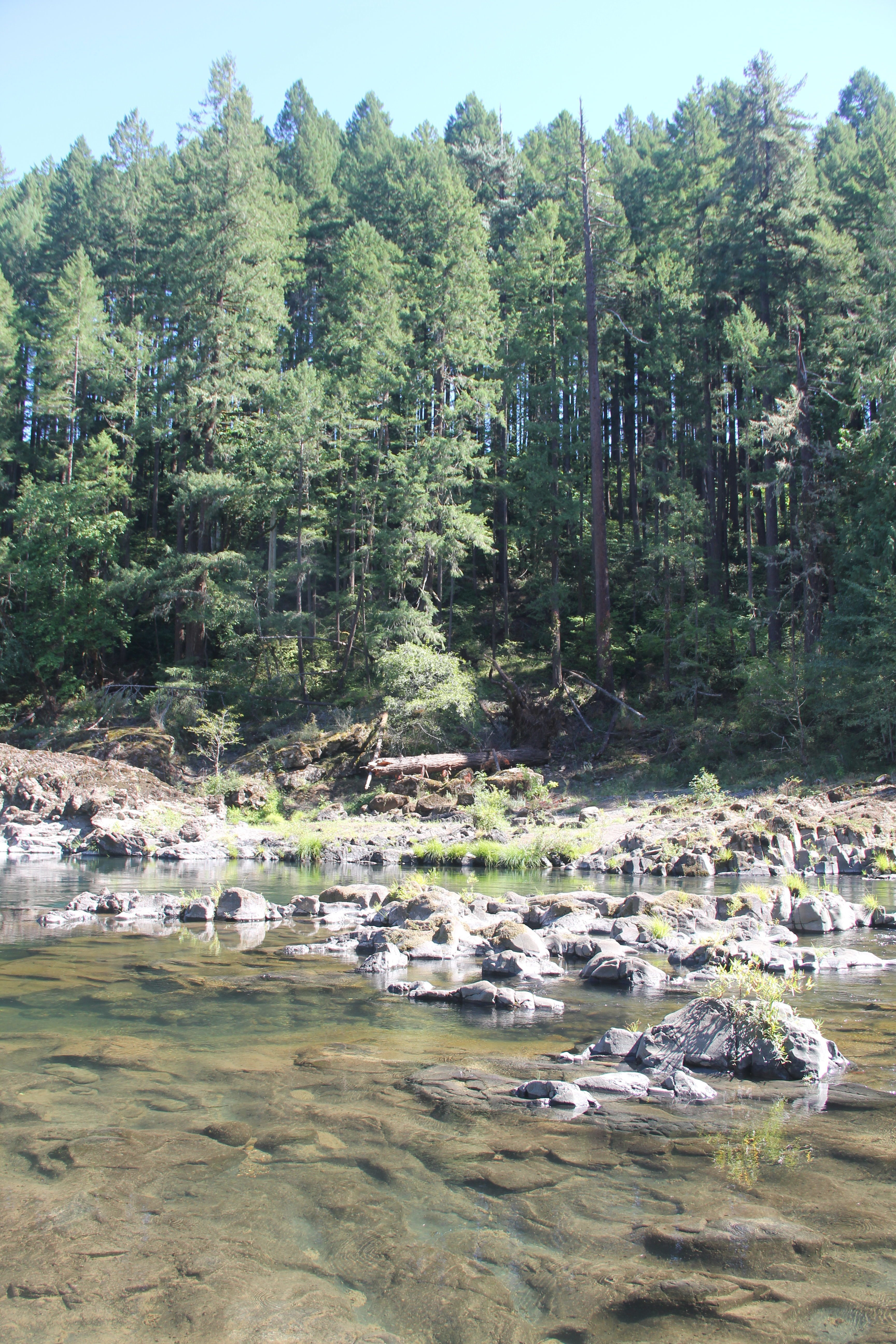
The BLM is not supposed to be targeting reserves for timber generation. Yet, the BLM state office has in fact issued direction to each field office to turn out certain volumes of commercial timber from reserves, and to do it fast.
Technically riparian logging is allowed only for the purpose of stream restoration. For Umpqua Sweets, at this unit and elsewhere (more on that later), it looks like the BLM has mapped a lot of riparian reserve for commercial logging where it has commercial potential, without regard to whether that makes any watershed sense.
The agency claims restoration is part of its purpose. And, no doubt, the skilled folks who work for BLM would love to engage in stream restoration. We’re totally onboard with that! Things like tree tipping and snag-creation especially don’t haul out wood volume, so there is little incentive to over-do it. But don’t be fooled by the word, this is no restoration project.
Outer riparian reserve thinned trees go to the mill just like the harvest unit trees do. But, because it’s not (wink wink) really for commercial reasons, riparian reserve logs don’t count against the BLM’s annual sustained yield limits.
It seems darn funny, doesn’t it, that the places the agency targets for “restoration” seem to be such convenient commercial logging units.
This stand, according to the BLM computer, is 120 years old. Born in 1899. That’s closer to being old-growth than needing restoration.
When I first went there with my daughter, a bald eagle flew over us.
It didn’t land here. Maybe that’s why they say it’s not worth protecting.
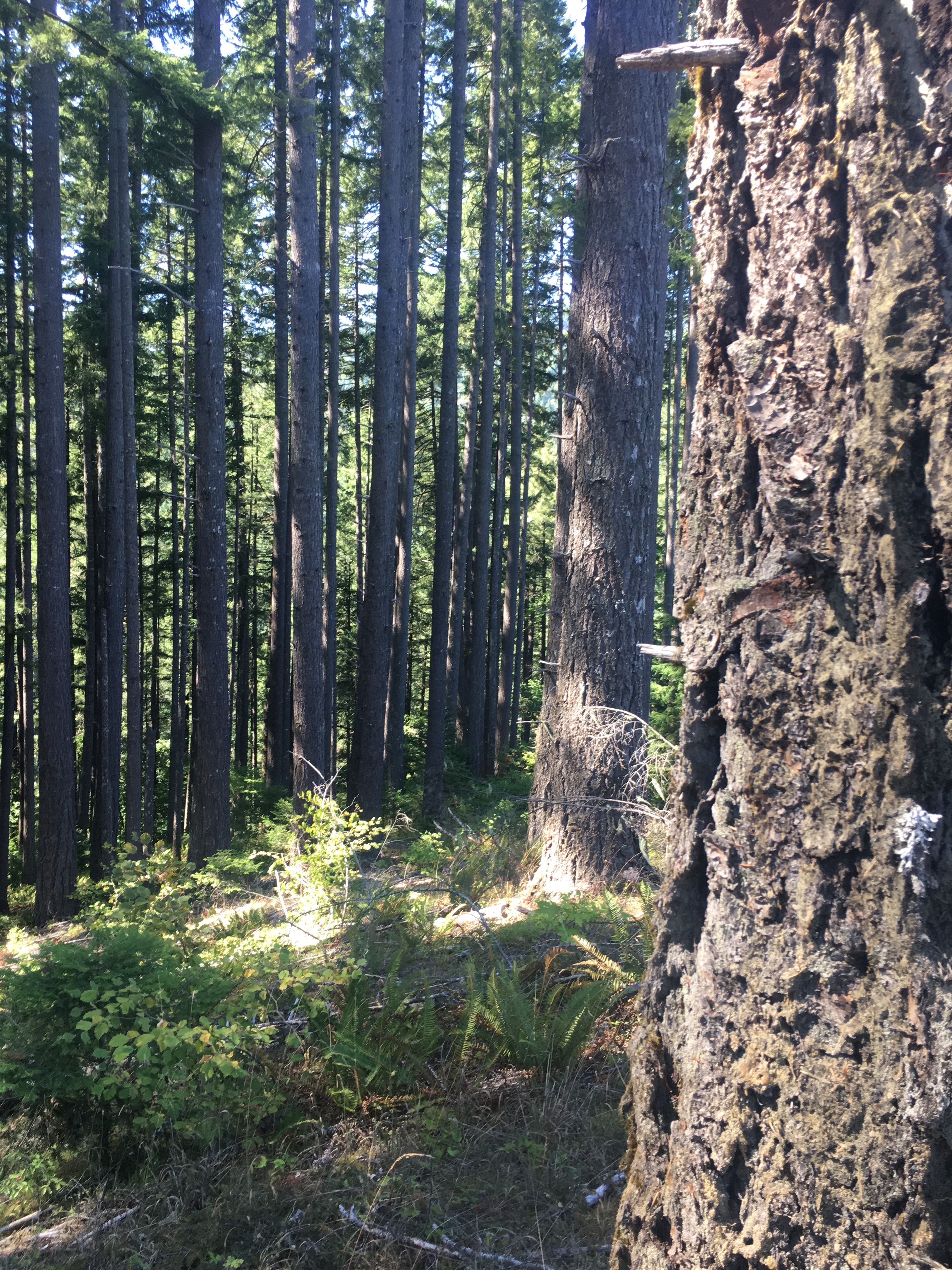
And we’ll have lots more to say about old-growth later.
NOTE: While the official scoping period closed September 25, they are still doing their analysis and it is not too late to let BLM know you are watching, and to share any special part of the ground truth that you might have.

